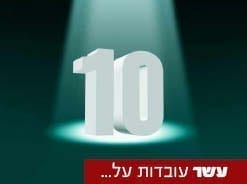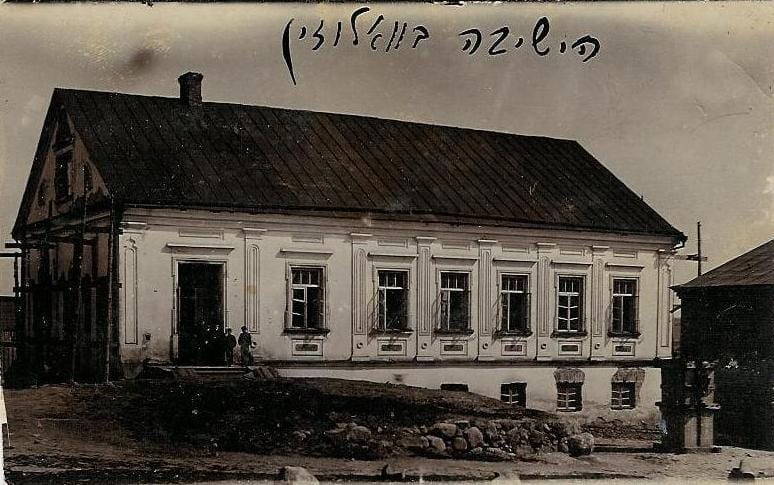1. Rabbi Yehuda Moshe Yeshua Fattia was the third son of the kabbalist Rabbi Moshe Yeshua. He was called by all “Hacham Yehuda” (without mentioning his surname). (Note: “Hacham” was used instead of “Rabbi” in Oriental countries.)
2. Hacham Yehuda was born in Baghdad, immigrated to Jerusalem twice but could not remain there because of the weather which did not suit his health. In 1934 he immigrated for the third time and stayed there until the end of his life.
3. As a child he studied in the Midrash Talmud Torah (elementary school) and afterwards studied in the Beth Zilka Midrash (yeshiva) where he became known as a preeminent scholar of Talmud. From childhood he tended to asceticism and studied the Kabbalah in secret. When his father found out he began to study the “Zohar” and the Ari's kabbalistic writings with him until he knew them by heart.
4. He was known for his sterling character and his love for every Jew. His entire life he distanced himself from any position of authority and all kinds of pleasures, and lived frugally.
5. At the age of 17, he was asked to lead the prayers in the Midrash of Rabbi Abdallah Somekh, the leading sage in Baghdad. After one of those present argued that he didn’t have a full beard and therefore shouldn’t lead the prayers, R. Abdullah Somekh stood up and on the spot gave Rabbi Yehuda rabbinic certification to be a rabbi and an instructor of Jewish law.
6. At the age of 25 he was expert in the open and esoteric meanings of the Torah, and he wrote his first work based on Jewish mysticism (called Yayin Ha-Rokach — “Spiced Wine”). He was expert in the esoteric significance of names and incantations, wrote amulets and healed the sick. He helped several souls reach their rectification and removed dybbuks that had entered people.
7. Hacham Yehuda would effect rectifications for the deceased and dybbuks. He spoke with demons to remove them from their human host, using kabbalistic formulas. He was also expert in solving dreams, and many came to his door just to get his blessings.
In his book “Spirits Relate” (Ruchot Mesaprot), he tells of dozens of cases in which he removed spirits who had ensconced themselves in people. On one occasion, Hacham Yehuda related that a Jew named Ezekiel Ezra, who was nicknamed “Bechor”, came to him and complained that when he stood in prayer, evil thoughts would enter his mind “as if someone is speaking from my heart and telling me to convert to Protestantism, G-d forbid.” The man said that these heretical thoughts were disturbing his prayers and he had previously gone to the Ben Ish Chai to be healed.
Rabbi Yosef Chaim had sent a letter to the sage Rabbi Eliyahu Mani, the rabbi of Hebron, who replied that “a large shell of impurity was wrapped around Bechor’s heart and I cannot deal with it.” Rabbi Yosef Chaim suggested that Bechor carry a mezuzah on himself for protection, but it did not help, and he finally turned to Rabbi Yehuda Fattia to help him. Rabbi Yehuda Fattia began to recite various incantations next to the man's ear so that “the murmurings of the incantations in his ear and into his limbs, would push out the murmurings of the spirit.” During the incantations, the spirit in Bechor’s body began to laugh, and said that if Rabbi Yosef Chaim, the author of the Ben Ish Chai, could not get rid of him, there is no reason that Rabbi Yehuda Fattia would succeed.
Rabbi Yehuda Fattia continued his incantations and ignored the spirit’s words. He demanded that the spirit tell him his name and the name of his hometown. But the spirit adamantly refused. Rabbi Fattia did not stop his incantations and shofar blowing, until the spirit surrendered to him and asked why the rabbi wanted to know his name and hometown.
“I want to rectify your soul so you will enter Paradise and will not be slung around in the Hereafter,” replied Hacham Fattia, but the spirit announced solemnly that he had no desire to enter heaven. Rabbi Fattia again recited incantations until the spirit shrieked and said that its name is David the son of Savti the son of Rivka from city of Izmir, and he was an apostate who committed many sins.
Hacham Fattia described in a long and wonderful account the amazing turn of events until he made the startling discovery that the spirit was Shabtai Zvi. After he consulted with the Ben Ish Chai and the famed kabbalist Rabbi Shimon Agassi, Hacham Fattia interviewed Shabtai Zvi’s spirit, and heard from him in detail his horrific experiences after death and how he had been transferred from one torture department to another, reincarnations and other torments. Hacham Fattia arranged for a lengthy rectification for him, and eventually Shabtai Zvi’s spirit was allowed into hell to finish his rectification, and he left Bechor.
8. Most of Hacham Fattia’s books deal with kabbalah:
“Minchat Yehuda” – is a commentary on passages in the Bible, Talmud, and Kabbalah, including talks with dybbuks and the procedure to remove a dybbuk.
“Beth Lechem Yehuda” – a commentary on the kabbalistic work Etz Chaim.
“Yayin Ha-Rokach” – a commentary on the Zohar’s Idra Rabba and the Idra Zuta.
“Matok Lanefesh” – a commentary on Sava D’mishpatim.
“Afikei Mayim” – an in-depth commentary on the kabbalistic work Etz Chaim (for use with a study group).
“Ateret Rachel” – commentary and compilation of homilies on Ethics of the Fathers.
“Keter Tzadik” – interpretation and compilation of homilies on the Five Books of the Torah.
“Assirei Ha-Tikvah” – book of prayers and supplications for every eventuality.
“Chasdei David” – various supplications and prayers.
“Mishlei Bavel” – 842 parables that were popular with the masses, with a commentary based on the 4 levels of Torah interpretation (Pardes).
9. During the Second World War, all the residents of the Land of Israel were terror-stricken due to the blitzkrieg advance of the Nazi forces. They had overrun the North African coast and were making almost uninterrupted progress toward the Land of Israel. During this time of great tribulation, Hacham Fattia came to the rescue of the Jews in the Holy Land. Author Haim Sabato describes the miraculous rescue in his book “Bo’i Ha-Ruach”:
“They decided to follow the advice of the lion who headed the group — the righteous Baghdad hacham Rabbi Fattia who was a miracle-worker. After addressing a question to heaven through a dream, he commanded each of the group to go to another place to pray.”
Rabbi Fattia organized a group of kabbalists to pray at the graves of the righteous throughout the country. He recited specially formulated prayers in Jerusalem together with a group of elderly kabbalists. He even chartered an aircraft to encompass the Land of Israel several times, while he himself prayed constantly to protect the country from harm. Ultimately, as is well known, Rommel's army was repelled by the British Army in July 1942, in the first battle of El Alamein. This all took place a few months before Hacham Fattia’s death. Many were convinced that it was his prayers that thwarted the decree.
10. On 7 Shevat 1937, he took ill and was hospitalized in the “Shaare Zedek” hospital. After his condition deteriorated, his disciple, Rabbi Salman Mutzafi, went to Rachel's Tomb to pray for his recovery but felt that the gates of mercy were not opening to his prayers. After reciting incantations, he declared that he voluntarily gives up five years of his life as a gift to his teacher and mentor. Upon his return to the hospital, he discovered that Hacham Yehuda Fattia had opened his eyes and on 27 Shevat completely recovered and returned home.
Exactly five years and six months later, on Monday, 27 Av in 1942, Hacham Yehudah returned his soul to its Creator.
We today know of many instances where souls entered people's bodies and were removed by Hacham Yehuda Fattia, and his grandson, Rabbi Batsri, has done this in our generation too.





